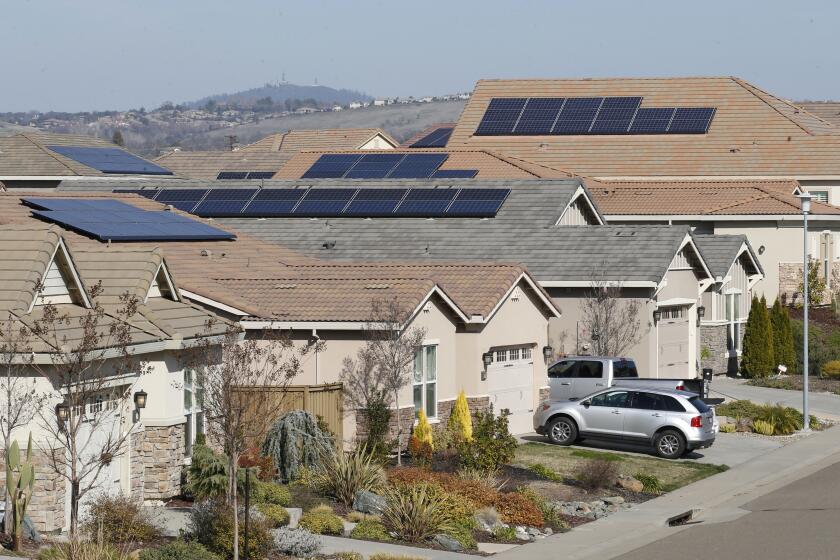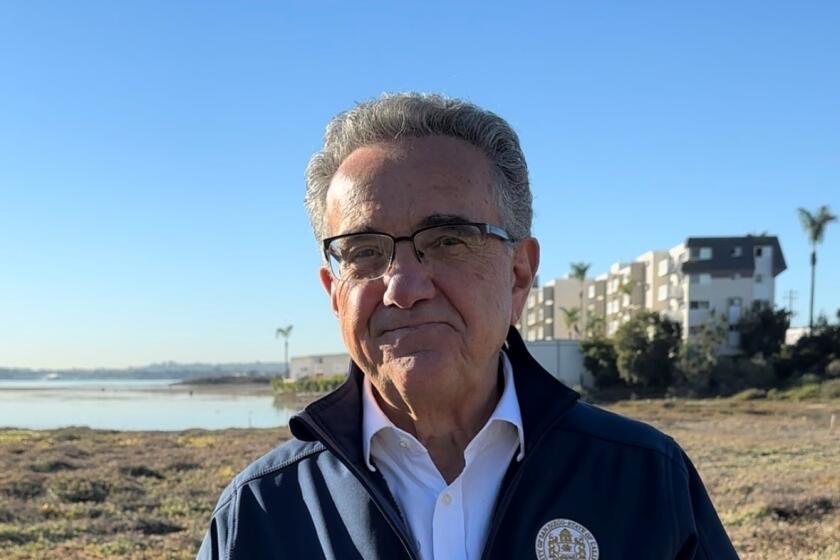CEQA an obstacle for needed housing in California
By 2050, San Diego’s regional population will increase from 3.14 million to 4.07 million. That’s mostly due to births exceeding deaths, not from immigration or people moving here from elsewhere in the U.S. We can’t pretend our population won’t increase any more than we can pretend there isn’t climate change or old age. We need to get ready for more people.
How can we accommodate them and retain the natural beauty and lifestyle that makes San Diego so great?
Our best strategy is infill. That’s the use of vacant or underused land in already-developed areas for new construction. Planners and environmentalists agree that more sprawl is a bad idea; it consumes open space, requires more taxpayer investments in new roads and pipes, and results in longer commutes, more pollution and more congestion. Infill development results in shorter car commutes and makes it easier to travel by transit, bicycle or on foot, which leads to cleaner air. Infill development also serves today’s market for housing. Millennials and seniors are looking for compact, energized and walkable neighborhoods as alternatives to the suburbs.
Related: CEQA’s environmental protections work for all of us
Ironically, a huge obstacle to this environmentally virtuous approach is an environmental law, the California Environmental Quality Act, or “CEQA.” That 1970 law ensures that governmental decision makers are made fully aware, via an open process, of all significant environmental impacts that might result from one of their decisions, and that those impacts have been minimized. The problem is that CEQA applies the same process to putting housing on an urban parking lot as in a coastal wetland. And that makes infill development really tough.
It takes a lot of money and time to satisfy CEQA. Neighborhood projects like pocket parks or traffic calming are often dead on arrival, not because of construction costs, but because governments can’t spare hundreds of thousands of dollars for the environmental review process. Private projects have to bear these costs too, as well as the costs of time. Preparing studies, responding to comments and scheduling hearings can take several years. The litigation that follows a local government approval, even if frivolous, typically delays the project by at least another 18 months.
These burdens make housing more expensive, at a time when supply is short and prices are already prohibitively high for working families and our children. Many developers won’t even consider building affordable housing because once the anticipated costs of CEQA preparation and upfront litigation are factored in, the investment doesn’t pencil out.
CEQA litigation also undermines public planning and the democratic process. Lawsuits can be filed by anyone — even a business competitor or one nearby resident — for motives unrelated to the environment. Opponents can file anonymously under the guise of a “public interest” group, so that nobody knows who the real opponent is. And community planning can be entirely undercut. Why would an angry neighbor bother working with the local planning group? A CEQA lawsuit is much easier. Once there’s a lawsuit, the developer is heavily incentivized by the cost of delay to settle with the opponent. So the angry neighbor might get the changes to the project that he wants, regardless of the opinion of the community or the officials elected to represent the public. If not, maybe there’s some cash to make him go away.
CEQA defenders resist reform because of sensitive resource protection, but that’s way off-base. Over 80 percent of the construction projects challenged under CEQA are infill projects in already-developed areas, not sprawling new suburbs tearing up hillsides and wetlands. And half of CEQA litigation targets public construction projects, including parks. Among those public projects, the most frequent targets of CEQA are public transit projects that are vital to reducing greenhouse gasses. Why would we let an environmental law be an impediment to transit at all?
The drag of CEQA on good urban development is bad for the environment and undercuts the credibility of the environmental movement. We should at least limit litigation relief to true environmental impacts, like public health or sensitive ecology. More fundamentally, let’s empower our neighbors and our elected officials — not the courts — to make decisions about our urban futures through sustainable plans and zoning. And then let’s end — not excuse — CEQA’s undemocratic, counterproductive paperwork and litigation obstacles to good development.
Let’s put new housing in the right places and create vibrant neighborhoods that are walkable, bikeable and have access to transit.
Peters, D-San Diego, represents California’s 52nd Congressional District.
Get Weekend Opinion on Sundays and Reader Opinion on Mondays
Editorials, commentary and more delivered Sunday morning, and Reader Reaction on Mondays.
You may occasionally receive promotional content from the San Diego Union-Tribune.





